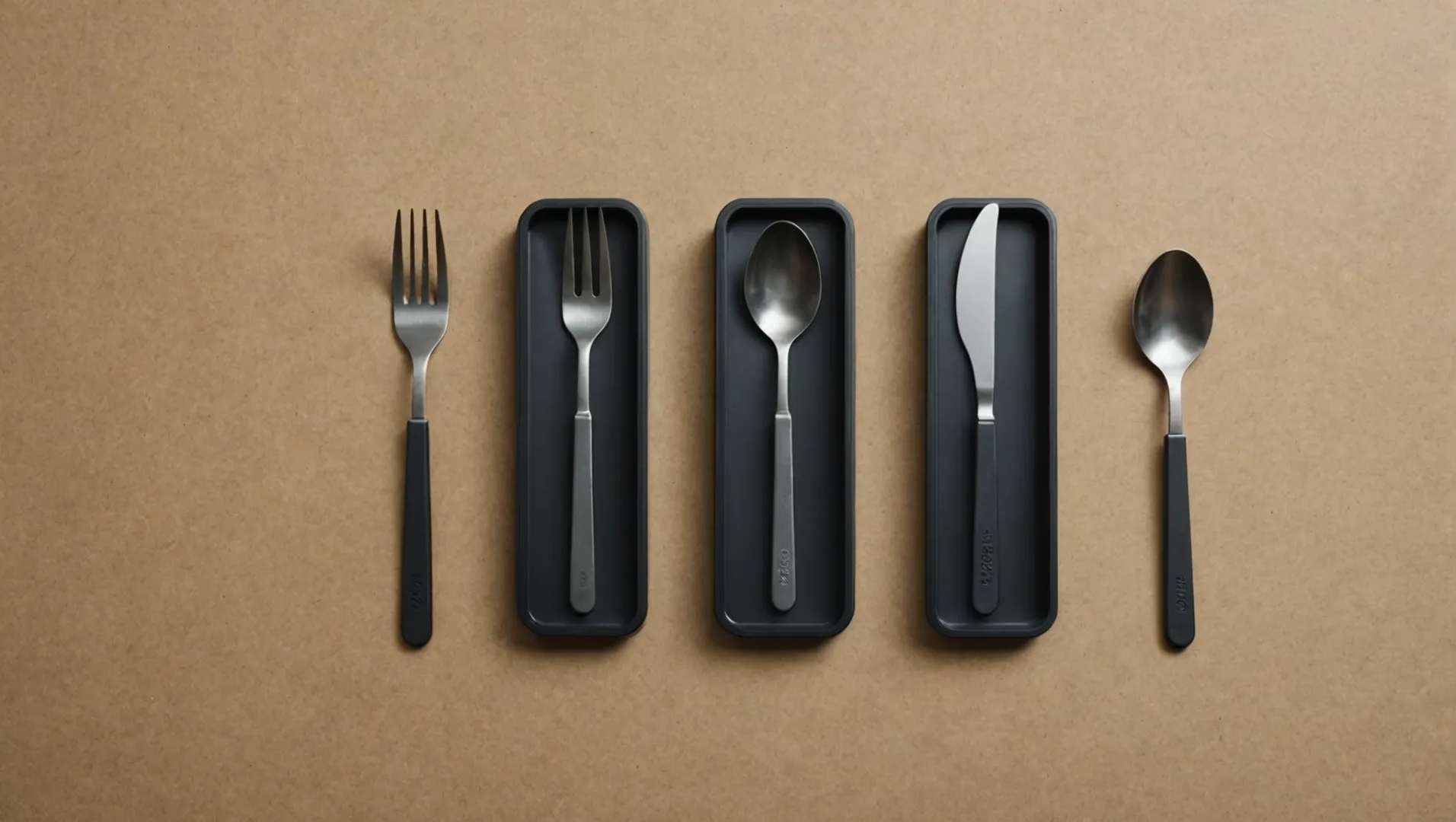
Navigating the world of injection molding materials can feel like wandering through a labyrinth. With options like ABS and PLA, it’s crucial to understand their unique properties to ensure you choose wisely.
When it comes to injection molding, the choice between ABS and PLA boils down to your project’s needs—strength and durability with ABS versus eco-friendliness and biodegradability with PLA.
Let’s dive deeper into the characteristics of each material, examining their strengths and weaknesses so you can confidently choose the right one for your needs.
ABS is more popular than PLA for injection molding.True
ABS's strength and heat resistance make it preferable for industrial use.
What Are the Key Differences Between ABS and PLA?
Navigating the world of injection molding materials can be complex, especially with choices like ABS and PLA. Understanding their distinct properties is crucial for effective application.
ABS and PLA differ mainly in strength, heat resistance, environmental impact, and application scenarios. ABS offers higher strength and heat resistance, suitable for industrial uses, while PLA is eco-friendly and ideal for disposable products.

Understanding ABS and PLA: Material Composition and Properties
ABS (Acrylonitrile-Butadiene-Styrene) is renowned for its robust mechanical strength and toughness. Its ability to withstand high temperatures (80℃ – 100℃) makes it a preferred choice in settings requiring durability. Additionally, ABS exhibits good dimensional stability during injection molding processes1, ensuring precision in the final product. The material’s resistance to common chemicals adds to its versatility in various industrial applications.
PLA (Polylactic Acid) stands out for its eco-friendly attributes. Derived from renewable resources like corn starch, PLA is biodegradable under specific conditions. While it offers moderate hardness, it is more brittle compared to ABS, which limits its use in applications demanding high impact resistance. Its lower printing temperature translates into reduced energy consumption, and it boasts excellent biocompatibility, opening avenues for use in medical and food packaging sectors.
Comparative Analysis: ABS vs. PLA
| Feature | ABS | PLA |
|---|---|---|
| Strength | High mechanical strength | Moderate hardness |
| Heat Resistance | Can withstand temperatures of 80℃ – 100℃ | Low printing temperature |
| Dimensional Stability | Excellent during injection molding | Relatively stable but less precise |
| Chemical Resistance | Resistant to many common chemicals | Limited chemical resistance |
| Environmental Impact | Not biodegradable | Environmentally friendly and biodegradable |
ABS is a go-to material when high strength, heat resistance, and precision are required. This makes it ideal for products in industrial manufacturing and electronic components like mobile phone cases and automotive interiors. On the other hand, PLA’s green credentials make it suitable for eco-conscious projects, particularly in producing disposable tableware and 3D printing items.
Choosing the Right Material for Your Needs
When choosing between ABS and PLA, consider the specific demands of your project. For applications where durability and resistance are paramount, ABS materials2 are preferable. However, if the environmental impact and sustainability are critical, PLA offers significant advantages.
In summary, understanding the key differences between these materials—such as strength, heat resistance, environmental impact, and application scenarios—can guide you toward the optimal choice for your injection molding needs. Whether you prioritize durability or sustainability will ultimately inform your decision.
ABS is more heat resistant than PLA.True
ABS withstands 80℃ - 100℃, while PLA has a lower temperature range.
PLA is more chemically resistant than ABS.False
ABS is resistant to many chemicals, whereas PLA has limited resistance.
How Does Environmental Impact Influence Material Choice?
Material selection is pivotal in reducing environmental footprints and enhancing sustainability in manufacturing.
Environmental impact significantly influences material choice by prioritizing renewable, biodegradable, and recyclable options, such as PLA, over non-biodegradable materials like ABS, when eco-friendliness is a priority.

Material Choice Environmental Impact
Understanding the Role of Environmental Impact in Material Selection
When manufacturers consider the environmental impact3 of materials, they weigh factors like resource renewability, biodegradability, and energy consumption during production. This assessment helps in selecting materials that align with sustainable practices. PLA (polylactic acid), derived from renewable resources like corn starch, is often favored for its biodegradable properties, making it a preferred choice for eco-friendly products.
On the other hand, ABS (Acrylonitrile-Butadiene-Styrene Copolymer), while offering superior strength and heat resistance, is derived from petroleum-based resources and is not biodegradable. This makes it less desirable for applications where environmental sustainability is paramount.
| Material | Resource Source | Biodegradability | Energy Consumption |
|---|---|---|---|
| ABS | Petroleum-based | No | High |
| PLA | Renewable (corn starch) | Yes | Low |
Balancing Performance with Sustainability
In scenarios where environmental impact takes precedence, PLA‘s low energy requirements during production and its ability to decompose under specific conditions make it an attractive choice. For instance, industries focused on reducing carbon footprints, such as the food packaging sector, often opt for PLA due to its eco-friendly nature.
However, if a project demands high strength, durability, and resistance to heat and chemicals—common in automotive or electronic applications—ABS becomes more favorable despite its environmental drawbacks. This illustrates the need for a balanced approach when environmental concerns compete with performance requirements.
Industry Practices and Innovations
The drive towards greener practices has led to innovations aimed at enhancing the sustainability of traditionally less eco-friendly materials like ABS. These include incorporating recycled ABS into new products or developing bio-based alternatives that mimic ABS properties while reducing environmental harm.
For example, research into bio-based plastics is ongoing, aiming to combine the robust qualities of ABS with the environmental benefits of PLA. Such innovations are crucial as industries strive to meet stringent environmental regulations and consumer demand for sustainable products.
Manufacturers must stay informed about these developments to make educated decisions that align with both environmental goals and performance needs.
PLA is biodegradable and derived from corn starch.True
PLA is made from renewable resources like corn, making it biodegradable.
ABS is preferred for eco-friendly applications over PLA.False
ABS is petroleum-based and non-biodegradable, unlike eco-friendly PLA.
In Which Industries Is ABS More Widely Used?
ABS is a versatile material found in various industries due to its durability and strength.
ABS is widely used in the electronics, automotive, and toy industries due to its strength, heat resistance, and dimensional stability, making it ideal for durable and precise components.

Electronics Industry
ABS (Acrylonitrile-Butadiene-Styrene) is extensively used in the electronics industry for manufacturing durable and heat-resistant housings for devices. Its excellent dimensional stability ensures that components like mobile phone cases4 and computer housings fit perfectly and protect sensitive electronics from external impacts.
Automotive Industry
In the automotive sector, ABS plays a critical role due to its mechanical strength and chemical resistance. It is commonly utilized in car interiors and non-critical parts where durability is essential. The material’s ability to withstand high temperatures makes it suitable for dashboards, trims, and other components that need to maintain integrity under varying conditions.
Toy Manufacturing
The toy industry benefits from ABS‘s ability to be dyed in vibrant colors and its robustness against intense play. Toys made from ABS can endure frequent handling without compromising safety or structural integrity. This makes ABS a preferred choice for manufacturers aiming to produce long-lasting toys.
Comparison of Industries Using ABS
| Industry | Key Use Cases | Benefits of ABS |
|---|---|---|
| Electronics | Mobile phone cases, computer housings | High strength, heat resistance, dimensional stability |
| Automotive | Interiors, dashboards, trims | Mechanical strength, chemical resistance |
| Toys | Durable and colorful toys | Robustness, color versatility |
These industries leverage the unique properties of ABS to meet specific demands for durability, stability, and aesthetic appeal. Exploring these applications highlights why ABS is favored over other materials like PLA in contexts where strength and precise manufacturing are paramount.
ABS is primarily used in the food industry.False
ABS is mainly used in electronics, automotive, and toy industries.
ABS offers excellent heat resistance for electronics.True
ABS's heat resistance makes it ideal for device housings.
Why Might PLA Be Preferred for Eco-Friendly Projects?
As the demand for sustainable materials grows, PLA emerges as a leading choice for eco-friendly projects. But why is it preferred over other materials?
PLA is preferred for eco-friendly projects due to its biodegradability and origin from renewable resources. Made from natural sources like corn starch, PLA decomposes in composting conditions, reducing environmental impact compared to traditional plastics.

Biodegradability and Environmental Benefits
One of the foremost reasons PLA (polylactic acid) is chosen for eco-friendly projects is its ability to biodegrade under specific conditions. Derived from renewable resources such as corn starch, PLA breaks down into natural components like carbon dioxide and water when subjected to industrial composting. This process can significantly reduce landfill waste, making it an environmentally sound alternative to petroleum-based plastics.
In contrast, traditional plastics can take hundreds of years to decompose, contributing to persistent environmental pollution. By opting for PLA, companies and individuals can align with global sustainability goals, reducing their carbon footprint and promoting a circular economy.
Renewable Resource Origin
PLA‘s production from plant-based resources not only supports its biodegradable nature but also means its manufacturing process can be more sustainable. Unlike conventional plastics that rely on fossil fuels, PLA leverages the natural carbon cycle, absorbing carbon dioxide during plant growth and releasing it upon decomposition. This balance helps mitigate the effects of greenhouse gases.
Moreover, the use of renewable resources in manufacturing fosters agricultural development5 and can drive innovation in bio-based material technologies.
Applications in Eco-Friendly Projects
Due to its green credentials, PLA is prominently used in projects where environmental impact is a priority. Here are some common applications:
- Disposable Tableware: As societies move away from single-use plastics, PLA-based cutlery and plates offer a biodegradable option that doesn’t compromise on functionality.
- Packaging: Biodegradable packaging made from PLA can protect products while ensuring minimal environmental impact.
- 3D Printing: With its low printing temperature and ease of use, PLA is a popular choice in the 3D printing community, especially for prototypes and models where environmental considerations are important.
Challenges and Considerations
While PLA presents numerous advantages for eco-friendly projects, there are challenges to consider. Its lower heat resistance and brittleness compared to materials like ABS (Acrylonitrile-Butadiene-Styrene) mean it may not be suitable for all applications. Additionally, the composting infrastructure required to fully realize its biodegradable potential is not yet widespread in many areas.
When choosing materials for eco-friendly projects, it’s essential to weigh these factors alongside the benefits to determine whether PLA is the right fit for your needs. Examining industry trends6 can provide further insights into how PLA is being adapted and improved to meet diverse requirements.
PLA is derived from renewable resources like corn starch.True
PLA is made from plant-based materials, reducing reliance on fossil fuels.
PLA takes hundreds of years to decompose in landfills.False
PLA biodegrades under industrial composting conditions, unlike traditional plastics.
Conclusion
In summary, your choice between ABS and PLA hinges on whether you prioritize performance or sustainability. Assess your project’s needs carefully to make the best decision.
-
Explore how ABS maintains precision in injection molding applications.: Dimensional Stability. Injection molded parts need to be kept as close as possible to their required dimensions. With its excellent dimensional … ↩
-
Learn why ABS is favored for high-strength industrial products.: These properties include high rigidity, resistance to impact, abrasion, and strain. Used in electronic housings, auto parts, consumer products, pipe fittings, … ↩
-
Explore how sustainability shapes material choices across industries.: Materials with high embodied energy and significant emissions are disproportionately responsible for climate change and environmental … ↩
-
Discover how ABS benefits electronic device housings.: These properties make ABS case enclosures a standard choice for applications such as DIY projects, desktop electronics, device prototyping, and handheld devices … ↩
-
Learn how renewable resources foster agricultural growth and innovation.: The Benefits of Renewable Energy in Manufacturing · 1. Efficient Raw Material Processing · 2. Reduced Energy Costs · 3. Limited Service Disruptions. ↩
-
Discover how PLA adapts to meet diverse eco-friendly needs.: The global polylactic acid market size was valued at USD 713.22 million in 2023 and is expected to grow at a CAGR of 21.4% from 2024 to 2030. ↩






